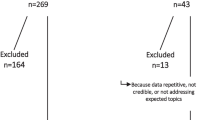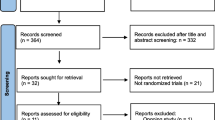Abstract
Purpose: Our purpose was to determine if the presence of a hydrosalpinx effects the outcome of in vitro fertilization (IVF)–embryo transfer.
Methods: We performed a retrospective analysis of IVF cycle stimulation sheets.
Results: A total of 1000 patients with tubal factor infertility was analyzed. There were 60 hydrosalpinx patients who underwent 116 initiated cycles with 106 embryo transfers, compared to 940 control patients undergoing 1428 initiated cycles with 1150 embryo transfers. Both groups had a similar response to ovarian stimulation, number of oocytes retrieved, and number of embryos transferred. The hydrosalpinx group had a significantly higher preclinical loss rate (22/59 = 37% vs 80/566 = 14%; P = 0.001), a significantly lower implantation rate (55/352 = 16% vs 795/3795 = 21%; P = 0.013), a trend toward a reduced delivery rate per transfer (28/106 = 26% vs 387/1150 = 34%; P = 0.066), a significantly higher ectopic pregnancy rate (5/59 = 8% vs 16/566 = 3%; P = 0.04), and a similar spontaneous abortion rate (9/37 = 24% vs 99/486 = 20%; P = 0.28) compared to the control tubal factor group.
Conclusions: This study demonstrates a decrease in implantation rates and an increase in preclinical miscarriages and ectopic pregnancies in patients with hydrosalpinges compared to tubal-factor patients without sonographic evidence of dilated fallopian tubes.
Similar content being viewed by others
REFERENCES
Edwards RG, Steptoe PC, Purdy JM: Establishing full term human pregnancies using cleaving embryos grown in vitro. Br J Obstet Gynecol 1980;87:737-756
Society for Assisted Reproductive Technology and The American Society for Reproductive Medicine: Assisted reproductive technology in the United States and Canada: 1994 results generated from The American Society for Reproductive Medicine/Society for Assisted Reproductive Technology Registry. Fertil Steril 1996;66:697-705
Rosenwaks ZR, Davis OK, Damario MA: The role of maternal age in assisted reproduction. Hum Rep 1995;10(Suppl 1):165-172
Check JC, Lurie D, Callan C, Baker A, Benfer: Comparison of the cumulative probability of pregnancy after in vitro fertilization-embryo transfer by infertility factor and age. Fertil Steril 1994;61:257-261
Kassabji M, Simms JA, Butler L, Musasher SJ: Reduced pregnancy outcome in patients with unilateral or bilateral hydrosalpinx after in vitro fertilization. Eur J Obstet Gynecol 1994;56:129-132
Strandell A, Waldenstrom U, Nilsson L, Hamberger L: Hydrosalpinx reduces in vitro fertilization/embryo transfer pregnancy rates. Hum Reprod 1994;9:861-863
Andersen AN, Yue Z, Meng FJ, Petersen K: Low implantation rate after in vitro fertilization in patients with hydrosalpinges diagnosed by ultrasound. Hum Reprod 1994;10:1935-1938
Vandromme J, Chasse E, Lejeune B, Van Rysselberge M, Delvingne A, Leroy F: Hydrosalpinges in in vitro fertilization: an unfavorable prognostic feature. Hum Reprod 1995;10:576-579
Katz E, Akman M, Damewood M, Garcia J: Deleterious effect of the presence of hydrosalpinx on implantation and pregnancy rates with in vitro fertilization. Fertil Steril 1996;66:122-125
Csemiczky G, Landgren BM, Fried G, Wramsby H: High tubal damage grade is associated with low pregnancy rate in women undergoing in vitro fertilization treatment. Hum Reprod 1996;11:2438-2440
Balazar AS, Hogan JW, Seifer DB, Frishman GN, Wheeler CA, Haning RV: The impact of hydrosalpinx on successful pregnancy in tubal factor infertility treated by in vitro fertilization. Fertil Steril 1997;67:517-520
Wainer R, Camus E, Camier B, Martin C, Vasseur C, Merlet F: Does hydrosalpinx reduce the pregnancy rate after in vitro fertilization? Fertil Steril 1997;68:1022-1026
Murray D, Sagoskin A, Widra E, Levy MJ: The adverse effect of hydrosalpinges on in vitro fertilization pregnancy rates and the treatment and benefit of surgical correction. Fertil Steril 1998;69:41-45
Blumenfeldt Z, Yoffe N, Bronshein M: Transvaginal ultrasound in infertility and assisted reproduction. Obstet Gynecol Surv 1990;46:36-49
Palermo GP, Cohen J, Alikani M, Adler A, Rosenwaks Z: Intracytoplasmic sperm injection: A novel treatment for all forms of male infertility. Fertil Steril 1995;63:1231-1240
Quinn TC, Gaydos C, Shepherd M, Bobo L, Hook EW, Viscidi R, Rompato A: Epidemiological and microbiologic correlates of chlamydia trachomatis infection in sexual partners. JAMA 1996;276:1737-1742
Pyrgiotis E, Sultan K, Neal G, Liu HC, Grifo J, Rosenwaks Z: Ectopic pregnancies after in vitro fertilization and embryo transfer. J Assist Reprod Genet 1994;11:79-84
Martinez F, Trounson A: An analysis of factors associated with ectopic pregnancy in a human in vitro fertilization program. Fertil Steril 1986;45:79-82
Herman A, Ron-El R, Golan A, Weinrab Z, Bukovsky I, Caspi E: The role of tubal pathology and other parameters in ectopic pregnancies occurring in in vitro fertilization and embryo transfer. Fertil Steril 1990;54:864-868
Dubuisson JB, Aubriot FX, Mathieu L, Foulot H, Mandelbrot L, de Joliniere JB: Risk factors for ectopic pregnancy in 556 pregnancies after in vitro fertilization: Implications for preventive management. Fertil Steril 1991;56:686-690
Hill GA, Herbert CM, Fleisher AC, Webster BW, Maxson WS, Wentz AC: Enlargement of hydrosalpinges during ovarian stimulation protocols for in vitro fertilization and embryo transfer. Fertil Steril 1986;45:883-885
Mansour R, Aboulghar MA, Serour G, Riad R: Fluid accumulation in the uterine cavity before embryo transfer: A possible hindrance for implantation. J Assist Reprod Genetics 1991;8:157-159
Russell JB, Rodriguez Z, Komins JI: The use of transvaginal ultrasound to aspirate bilateral hydrosalpinges prior to in vitro fertilization: A case report. J Vitro Fert Embryo Transfer 1991;8:213-215
David A, Garcia CR, Czernobilsky B: Human hydrosalpinx. Am J Obstet Gynecol 1969;105:400-411
Meyer WR, Castelbaum AJ, Somkuti S, Sagoskin AW, Doyle M, Harris JE, Lessey BA: Hydrosalpinges adversely affect markers of endometrial receptivity. Hum Reprod 1997;12:1393-1398
Mukherjee T, Copperman AB, McCaffery C, Cook CA, Bustillo M, Obasaju M: Hydrosalpinx fluid has embryotoxic effects on murine embryogenesis: A case for prophylactic salpingectomy. Fertil Steril 1996;5:851-853
Sachdev R, Kemmann E, Bohrere M, el-Danasouri I: Detrimental effect of hydrosalpinx fluid on the development and blastulation of mouse embryos in vitro. Fertil Steril 1997;68:531-533
Spandorfer S, Neuer A, Liu H-C, Rosenwaks Z, Witkin SS: IVF outcome in women with tubal occlusion ± hydrosalpinx and antibodies to Chlamydia trachomatis and heat shock proteins. In The 13th Annual Meeting of the ESHRE, Edinburgh, Scotland, June 22–25, 1997, abstract 240
Witkin SS, Sultan KM, Neal GS, Jeremias J, Grifo JA, Rosenwaks Z: Unsuspected Chlamydia trachomatis infection and in vitro fertilization outcome. Am J Obstet Gynecol 1994:171:1208-1214
Author information
Authors and Affiliations
Rights and permissions
About this article
Cite this article
Barmat, L.I., Rauch, E., Spandorfer, S. et al. The Effect of Hydrosalpinges on IVF-ET Outcome. J Assist Reprod Genet 16, 350–354 (1999). https://doi.org/10.1023/A:1020585728549
Issue Date:
DOI: https://doi.org/10.1023/A:1020585728549




